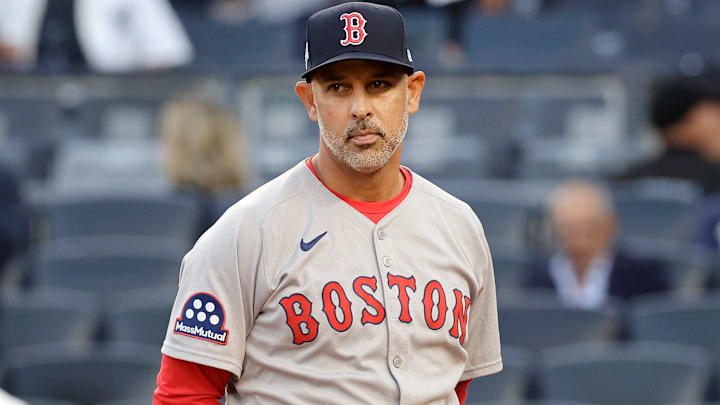The Boston Red Sox had the epitome of a roller coaster season. At times, they looked like a team that could make the World Series. At other times, they looked like a team that could give Kelly Leak, Rudi Stein, and the rest of the Bad News Bears a run for their money. They finished 89-73, earning an American League Wild Card spot in the playoffs, but fell to the rival New York Yankees in three games.
The playoff exit leads to an offseason full of decisions for Chief Baseball Officer Craig Breslow. The biggest of those decisions includes sorting out the position battles at both first and second base and how to shake out a seemingly overcrowded outfield with the return of a healthy Roman Anthony next season. Fans also want to see some pitching changes; however, the answer here is more of a philosophical one rather than one that can be solved with a free-agent signing.
The two biggest issues for Red Sox starting pitchers not named Garrett Crochet are that they weren’t going deep into games and don’t have enough swing-and-miss in their arsenals. Unless pitchers are frontline starters, it is really hard to get both out of a team’s other starters. The decision for Breslow and the Red Sox is which of those two desires they want to lean into more?
Red Sox Must Decide What They Want from the Starting Rotation
Both sides of the length vs. swing-and-miss argument have double-edged swords. Getting more length out of starting pitchers with less ability to miss bats means being more aggressive on the strike zone and pitching more to contact. That can be a scary proposition for a team that led the majors in errors this season. More length would also require the manager to have more faith in his starters facing a lineup for the third time, which is something that managerAlex Cora has been reluctant to do.
If the Red Sox want more whiffs from their starters, more often than not, that results in higher pitch counts earlier in the game, resulting in more innings on the arms in the bullpen. More swing-and-miss also means more pitches out of the strike zone for a team that, outside of Crochet, walked 255 batters this season, fifth-most in baseball. While it's clear the team needs one of these things out of its starters, which of the two isn't as obvious.
Why the Red Sox Need Their Starters to Go Deeper in Games
The Red Sox could use more length out of their starters because, behind Crochet, the starters had trouble getting through five innings. They ranked eighth in all of baseball in innings pitched per start, according to StatMuse.com, with 5.33 innings. Of the seven teams above them, five also made the playoffs.
But that number includes all of Crochet’s starts. Removing Crochet and the top innings eater from the other teams, that number drops to just 5.06 innings per start, dropping their ranking to 13th. Surprisingly, five playoff teams rank below the Red Sox in this category. With such a strong bullpen already under contract for next season, getting just a little more length out of their starters would allow those relievers to be that much fresher as the season goes on.
Why the Red Sox Need More Swing-and-Miss From Their Starting Pitchers
The counterargument to more length is more swing-and-miss, leading to more strikeouts. This season, the Red Sox starters accounted for 805 strikeouts, which was 12th best on the year. Much like the innings-per-start stat, removing Crochet’s numbers is where we really see the issue.
After taking out those numbers, Red Sox starters struck out 550 batters, plummeting them out of the top 20. The only playoff team with fewer strikeouts from the rest of their rotation is the Toronto Blue Jays. As I stated above, choosing this path could pose a problem for a staff that had the fifth-most walks by starting pitchers not named Crochet.
There are plenty of intriguing decisions to be made by Breslow and his staff this offseason, and a lot of them are intertwined. I don’t know if there is a right answer to this question, given the pros and cons to each side, but whichever lane the Red Sox choose, it may have a bigger impact on the starting rotation than any personnel changes that might be made.
